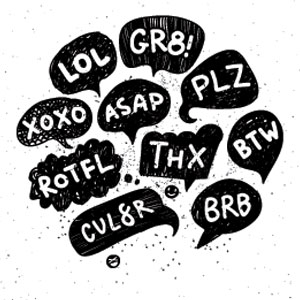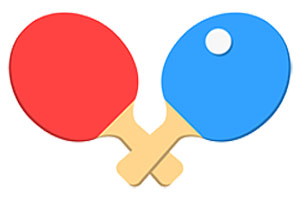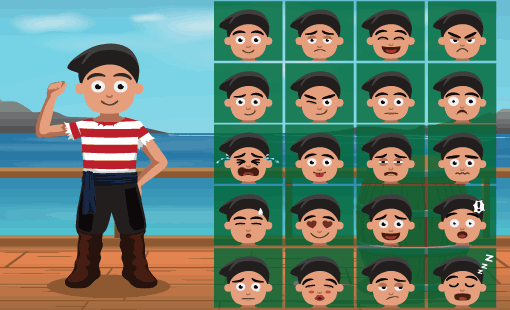We share nine exercises that help to bring fun into the contact centre, while improving key contact centre skills.
What Are the Keys to Good Customer Service Training Exercises?

According to Caroline Cooper, a Trainer and Consultant at Naturally Loyal, there are two elements that need to be part of a contact centre training exercise to gain maximum value from it.
These elements include a specific and relevant key message and the need for the exercise to be participative.
“Contact centres are notoriously stretched for time, so we need to make sure that there is a key message to each engaging exercise, so that as well as developing advisor skills, and making the learning memorable, advisors can also identify the relevance to their role.
We also need to make sure that everyone gets involved. Too often the more extrovert advisors put themselves forward to do a role play and get everyone to watch.
This makes it too easy for shy advisors to sit back and not take anything in. So, it’s important to either split teams into groups and allow everyone to role play or to create exercises that involve everyone.”
With this in mind, here are a number of exercises, recommended by Caroline herself, that were designed to be all-inclusive and to develop key advisor skills.
9 Free Customer Service Training Ideas
We have put together nine practical activities designed to enhance key skills in a contact centre. These activities focus on team-building, listening, questioning, emotional intelligence, and problem-solving.
Each exercise is structured to improve advisor performance while fostering a positive team atmosphere, making learning both effective and engaging.
1. The Ice Breaker

This exercise is a great way to kick off an induction training session, by getting recruits up and talking to their new colleagues and gathering key learnings that they will need to bring into the contact centre.
To get started, ask everyone to stand up and pair up with someone in the group who they don’t already know. If there is an odd number, you – as the trainer – will have to get involved.
There are three rounds to this exercise, each of which will last for a couple of minutes, and will require the advisors to swap partners, so they keep engaging with new people throughout the game.
At the start of each round, ask your advisors to do the following:
Round 1 – Find something you have in common with your partner outside of work (so this excludes working for the contact centre!).
Lesson – When you find something in common with someone, it is much easier to build rapport.
Round 2 – Share with your new partner something that you’re proud of, from any time in your life. It might be something you’ve achieved yourself or someone else you’re proud of.
Lesson – Finding something you are proud of makes you feel good. So help celebrate with advisors, or get them talking about things they are proud of.
Round 3 – Share with your new partner a time you came home from shopping having bought more than you planned to. What prompted you to spend more than you intended?
Lesson – Engaging advisors with great customer service from their own life experience helps get the team thinking about the subject matter.
For more exercises like this, which are great for remote contact centres, read our article: 10 Fun Customer Service Activities That Will Make Your Staff Smile
2. Acronyms

Acronyms is a quick, fun exercise to engage new advisors with fundamental contact centre topics, such as service excellence, soft skills and the customer experience.
Once you have a topic in mind, split the team into small groups of three to five people and give each team a word relating to that topic. The teams can either be given the same word or a different word.
A few words that you could use for the topic of “service excellence”, for example, could be “care”, “engage” or “positive”.
With their word or phrase, as well as some pens and paper, give the group two minutes to create an acronym, by coming up with a word for each initial letter that is relevant to the topic.
The best acronym could then win a prize, making it a nice game for groups to bond over. Established teams are often competitive enough to make it fun without the carrot of the prize!
To make this game as successful as possible, keep it fast-paced and come up with a few of your own examples before you get going, so you can give prompts to groups if they get stuck.
Find out more ideas for creating the best possible working environment for new recruits, in our article: 8 Ideas to Welcome New Advisors Into the Contact Centre
3. Questions and Answers

This game involves asking advisors two questions, to test their listening abilities – although they should not be told that this is the intention of the exercise.
The two questions to ask the team are:
i. How many of each species did Moses take into the ark?
ii. You are driving a bus which leaves Stoke at 8.30 with 23 people on board. It stops in Leicester dropping off 10 and picking up a further 4 passengers. It travels further south to Milton Keynes, where it drops off another 5 passengers and picks up a further 6. It arrives in London two hours later. What was the driver’s name?
These questions seem simple to answer, right? Yet, in Caroline’s experience, advisors nearly always get both of these questions wrong.
The right answers are:
i. None, it was Noah
ii. You
So, why do advisors nearly always answer these questions incorrectly. Caroline says it’s because:
- We hear what we expect to hear so we assumed it was Noah
- We don’t always catch the most important part of the question and get side-tracked with irrelevant information.
This is a lesson that when communicating with customers, we need to listen carefully and check our understanding.
We also must avoid assumptions at any cost, even if we’ve heard the problem before; a different solution may be required for this particular customer.
4. Ping Pong

No, not table tennis – but something equally engaging! It starts by getting the advisors to find a partner. Then they count to three, 1-2-3, 1-2-3, etc., but alternating between the two.
Once everyone’s in a rhythm every 15-20 seconds add in the next step.
Step 1 – Now substitute 1 for a hand clap (clap-2-3, clap-2-3)
Step 2 – Now substitute 2 for an action – e.g. wiggle (clap-wiggle-3, clap-wiggle-3)
Step 3 – Next substitute 3 for an action and sound e.g. yeehaw (clap-wiggle-yeehaw, clap-wiggle-yeehaw)
Step 4 – Now back to 1-2-3, 1-2-3
Sounds fun, right? But what does this have to do with listening?
The key message here is that once you are fully concentrating on what the “other person” is doing, it is much easier to create rapport and spot opportunities.
Also, the more we practise, as is the case when active listening, the easier things become.
For more tips on improving listening skills, read our article: Top Tips to Improve Listening Skills on the Telephone
5. Determine the Scenario

Too often advisors are asked to only use open questions, in order to gain as much information about the customer as possible, so they can then find the solution that works best for them.
However, there is a lot of value in closed questions, so you can confirm the information that you hear and lead the conversation, if the customer isn’t the most talkative. The best advisors are comfortable with both forms of questions.
To get advisors thinking about how to ask the best closed questions, to better lead the conversation, split the team into groups of three or four advisors and play this game!
The advisors, in their groups, are given a clue of a scenario, but not enough to determine what is actually going on. Tell one advisor the full story and give advisors a certain number of closed questions to help fill the gaps.
One scenario to give the team would be: “A man pushes a car round the corner and waits nervously” and the actual situation would be that you’re playing a game of Monopoly and just landed on someone else’s property with a hotel.
You are nervously waiting for the next player to throw the dice, as if you are asked for rent you will go bust! Be careful with this example, though, as if you’re playing this game with multinational advisors, they may not have a good understanding of what Monopoly is.
To better engage the team with the game, offer a prize to the team who take the fewest number of closed questions to understand the full scenario.
6. Over to You

For this exercise, ask small groups of advisors to consider an issue that is fairly common amongst your customer base and ask them how they would handle the matter.
While doing so, Caroline recommends asking the groups to think about the following four questions:
i. If this was your business, what would you do?
ii. If you knew you couldn’t fail, what would you do?
iii. If you had an unlimited budget, what would you do?
iv. If you had a magic wand, what would you do?
This exercise encourages advisors to start thinking for themselves and enables them to devise creative solutions to customer issues. Your team may just surprise you and come up with some great suggestions that you had never before considered.
As the trainer, move around each group and listen to their thoughts, always trying to give ideas some praise, to avoid stifling future creativity. Remember, even if the advisor’s suggestions are impossible to implement right now, they may spark future development plans.
For more tips on improving advisor questioning, read our article: Practical Tips for Effective Questioning and Probing Techniques
7. Real Play

This activity relies on role playing, a key ingredient to customer service training, especially during inductions and when new processes are brought into the contact centre.
According to Caroline, it can be difficult for an advisor to empathise with the customer if they have never personally experienced the issue before, and it is especially important for new advisors to experience situations from a customer’s perspective.
So, having the opportunity to role play and practise how to handle specific situations is great to give new recruits a taster of what working in the contact centre is actually like.
Take the pressure off the advisors so they can focus on the learning rather than the stress of ‘role playing’ in front of their colleagues.
Split the team into groups of three. One member of the group role plays as the customer, another as the advisor and the final member acts as an observer. It is better to do this than to make everyone watch a single group role play – no one enjoys that!
Each group is given a different customer issue, specific to scenarios that suit your business. They then act out the scenario, as you go around talking to each group, discussing how the advisor tried to find a solution, while asking the observer whether or not they would have done anything differently and what they thought the advisor did well.
8. Customer’s Shoes

To fully understand the emotions a customer is feeling when they call into the contact centre, advisors need to have a good understanding of the customer journey.
So, this activity, which can last for up to an hour, involves giving each group of two to three advisors a different section of the journey and reviewing it through a customer’s eyes.
Focus on every “touchpoint” between when a customer browses the website and any after-sales service, so the advisor is aware of each different emotion at each point on the journey.
With the groups having and experiencing their section of the journey, Caroline recommends asking them the following four questions:
i. What were your own observations?
ii. What did we do well to give customers a great experience?
iii. If this was your business, what would you do differently?
iv. What one thing could you start doing tomorrow to give our customers a better experience?
Experiencing your service first-hand allows advisors to speak to customers from their own experience, improving their authenticity, while they also have the opportunity to consider why certain customers may feel the way that they do. This is the first step to creating genuine empathy.
9. Nine Dots
To start this exercise, give each advisor a plain sheet of paper and ask them to draw a square in the centre approximately 8cm x 8cm.
Then, request that each person draws three lines of three dots in the middle of the square, so all the dots are lined up. Advisors should end up with a square that looks like this:

Then, set the group the challenge of joining all nine dots with four lines or fewer, without taking their pen off the page.
In all probability, advisors won’t be able to do so, as they will automatically assume that they have to stick to the confines of the box, while you can only complete the challenge by joining up the lines outside of the box, as shown below.

If anyone knows how to do this already, set them the challenge of joining the dots with three lines or fewer. This can be done like so:

In fact, it can even be done in one line, as we never said that the line had to be straight or even thin, did we?

This exercise is more than just a brainteaser, as Caroline points out two key learnings that can be taken away from it.
Learning 1 – Just because you can’t find a solution doesn’t mean one doesn’t exist. We often assume certain rules which don’t necessarily exist. For example, in this exercise many advisors would have assumed that the lines had to be straight, when they didn’t.
Learning 2 – Even when we come up with one solution, it doesn’t necessarily mean to say it’s the best solution, and normally there will be alternatives. So don’t assume your existing way of doing something or the first solution you find for a problem is the best one. For example, we found a solution with four lines first, but eventually we found a better way that just required the one.
In Summary
These exercises are all tried and tested within the contact centre industry and the teamwork involved with each is a first step in creating a great working environment.
However, this is not their main focus. These exercises have all been devised to engage advisors with key advisor soft skills that will hopefully help the team improve their performance further.
Good luck!
Thanks to Caroline Cooper of Naturally Loyal for recommending each of the training exercises that have been included on this list.
To find more examples of bringing fun into the contact centre, read our articles:
- Motivational Games for Call Centres
- 12 Fun Ideas for Your Break-Out Room
- 7 Games to Liven Up the Contact Centre
Author: Charlie Mitchell
Reviewed by: Hannah Swankie
Published On: 21st Jan 2019 - Last modified: 24th Jan 2025
Read more about - Skills, Caroline Cooper, Coaching, Editor's Picks, Fun, Games, Training


















